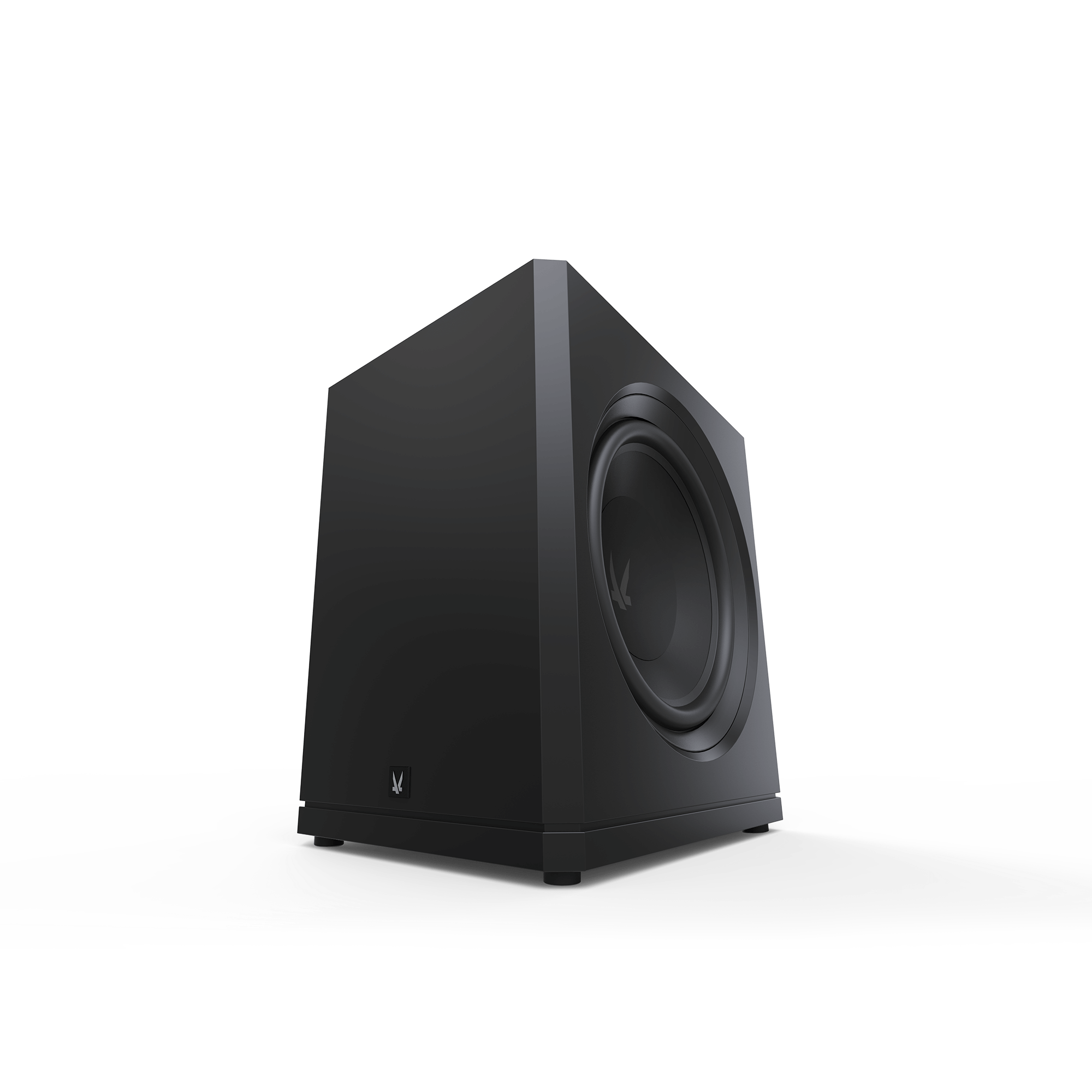COMPACT AND IMPRESSIVE
Almost every loudspeaker producer has subwoofers in their assortment, but only a few producers are as dedicated and make such impressive subwoofers as Norwegian Arendal Sound.
Text: Håvard Holmedal.
If you are going to have proper bass, and don’t have plans about purchasing a pair of large and expensive high-end speakers, there is no way around purchasing one or more subwoofers. We prefer multiple, and preferably placed where they give the best response, and not necessarily where they fit in to the interior decor. Getting proper bass in the living room or the cinema is demanding, however much easier with well built subwoofers than with large floorstanding speakers.
This time around we have had a visit of the large and impressively good JBL HDI 3800 speakers, however no matter how much I like the way they sound, there is still a long ways to go until they give me the results from 70-80Hz and down, in my living room compared to what I get with an Arendal Sound 1723 Subwoofer 1S. It goes deeper (a lot) and it’s tighter, while having more of both timbre and control.
Still well-built
The almost 14-inch large driver for Subwoofer 1S is properly made, and in this context somewhat of a wild animal to keep under control. It has to be mounted properly in a very solid cabinet to have any chance of keeping it from “running away”. I remember at one occasion a few years back in time we had a subwoofer for review with an obvious mismatch between weight, power and cabinet. The result was that the entire subwoofer was moving around on the floor. It would be like a ski-jumper trying to set a record on a surface that flexes away when he is leaping for the jump.
That is luckily not needed with Subwoofer 1S. The almost 25 kilo heavy and solid cabinet made from HDF (High Density Fibreboard) makes certain that the driver stays calm during playback. The cabinet is close to half a meter tall and wide, but is only 33.5cm deep.
The 13,8” large driver gets its power from the new Avalanche 800 IQ-amplifier. Yep, you guessed it. It is rated at 800Watt – conservatively measured in RMS, and it actually doubles its power in shorter bursts.
The 1723 series subwoofers look considerably more costly compared to the relatively new 1961-lineup. They are offered in a satin black or white paint finish or a black or white high gloss finish. In the living room high gloss is typically the one to go for, while satin is very practical in the home cinema.
The backside, or the side, is cleansed of switches and control knobs. In its place there is a practical display where you have full control of the subwoofer. You can even save separate settings for the RCA and XLR-inputs. The adjustability is almost endless, and there is a practical subsonic filter that cuts away the lower frequencies. In most cases this will clean up the bass and it also ensures the subwoofer doesn’t need to use a lot of power for playing back material under for example 20Hz.
Reaching abyssal depths
Some will surely scratch their head at the description “compact”, but despite a pretty large subwoofer driver, the outer dimensions are still rather modest. It doesn’t give the engineers much choice if they want to really dig down into the abyss. Electronic fiddling with the frequency curve is the only thing that will do it.
With the carefully calculated EQ-curves it is possible to get Subwoofer 1S all the way down to 18Hz (!). This setting works extremely well in the home-cinema, where depth and fundamentals are prioritised. The other EQ curves, EQ2 and EQ3 don’t give as deep a bass, but even better control of the sound. At around 20Hz it’s about 12-13dB difference between the volume from EQ1 to EQ3.
Arendal Sounds subwoofers are well enough made that it is no problem playing both loud and deep. Where way too many cheap subwoofers give audible levels of mechanical noise from the cabinet, and also loud port noise, Subwoofer 1S is impressively silent. However there is still a reason that Arendal Sound makes even bigger and more expensive subwoofers. They deliver even more pressure in the very deep end of the bass, and have even more control and tightness.
At full blast in the home cinema or stereo setup, one can perhaps say that this type of noise isn’t especially easy to hear, but remember that noise isn’t reduced through the crossover and will be a factor that can reveal where the subwoofer is placed.
Mechanical noise and whistling sounds in the bass port, can easily come higher up in the frequency range of a few hundred Hz. At that point the brain’s ability to hear the direction of the sound kicks in, and reveals why it is very important for the total experience that you shouldn’t be able to hear where the bass comes from.
If you are only playing at neighbour-friendly levels, this is usually not a big concern, however I am sure that’s not why you have bought a big and powerful subwoofer?
The Sound
In the beginning of the test, I hooked Subwoofer 1S to the pre-outs on Hegel H590. With this brilliant amplifier, the conditions should be right to get out the potential. I got my KEF R5’s out again, and pushed the subwoofer around to find a good placement. In my living room that is over to the side of my system, next to the sidewall on the left hand. Here that is a totally impractical placement, but if it sounds good, it sounds good.
The experience of connecting a subwoofer is what it always is. Even if it is only adjusted to play “under” the KEF’s, from around 40Hz and down, and with about zero volume, the sound stage grows to new heights. It becomes larger, gets more weight, and in this instance also the feeling of better dynamics and more attack when it kicks.
With some more volume it is immediately clear that what the KEF R5’s do in the deepest end of the bass creates a feeling of depth and weight, but this combination with the subwoofer lifts it to new dimensions. Beautifully defined bass combined with the extremely nice three-dimensional sound stage of the KEF R5 is actually highly addictive.
The road there isn’t as easy as connecting a pair of larger floorstanding speakers, because the transition between the subwoofer and floorstanding speakers is more than tricky. To get it right I have to get out my microphone and measuring software.
With a Lyngdorf MP 40 home-cinema amplifier with Room Perfect on the inside, it’s a totally different exercise setting up the subwoofer. You can almost dump it down where you want, connect a microphone and let the system do its magic. The result is many times better than you can manage by listening and adjusting, and it removes that feeling of “I just have to adjust a little more” every time you change movies or music content.
But no matter what you connect to it and what kind of music or movies you play, the Arendal Sound 1S is a show-off with tight and well managed bass, that doesn’t even have a hint of wool in its timbre. The control is great, dynamics impressive, weight and power is actually pretty awesome, and it impresses both in terms of size and price. For movies it lacks a little compared to the really large and expensive subwoofers of course, and even if it digs seriously deep, this is not what you are going for if you want to hit the richters scale. Arendal Sound has still managed to carefully balance the properties of Subwoofer 1S. It has a lot of everything, and that is what is impressive in this price range.
The fact that it lets itself integrate so seamlessly with hi-fi systems in the home is obviously also a large plus, even if there probably are more home cinema enthusiasts among their customers.
Pure goodness
For some, the most important factor is that a subwoofer reaches deep enough and that you feel the vibrations at the lower parts of your back. That isn’t quite enough. The sound has to be hitting hard, have enough pressure and it has to be tight and well defined. The more demands it needs to surpass, the more expensive it becomes. That is why it is very surprising to hear what Arendal’s subwoofers manage to deliver at the price point.
The question this time is of course whether it sounds good or not, but also if the new edition plays better than the previous. For owners of the previous models, I am not sure if I were to run to the store to put in even more money, but if the upgrade-monster is knocking on your door there is probably no way around it.
The impression is nonetheless that there is a new level of clarity and tone. It hasn’t come by itself and it requires that both the driver and amplifier is further fine-tuned.
WE LIKE
- Solidly made with good craftsmanship
- Impressive and heavy bass
- Clean, controlled and tight
- Integrates well with front speakers
WE DON’T LIKE
STEREO+ THINKS
If you have a budget subwoofer and want to upgrade, or invest in your first proper subwoofer, you are doing yourself a huge favor by checking out Arendal Sound. They are of course not alone in the market. Both SVS, REL, Klipsch, Dali and some others would be more than happy to play along, but in this price range there is barely anyone that can offer this level of sound quality.



